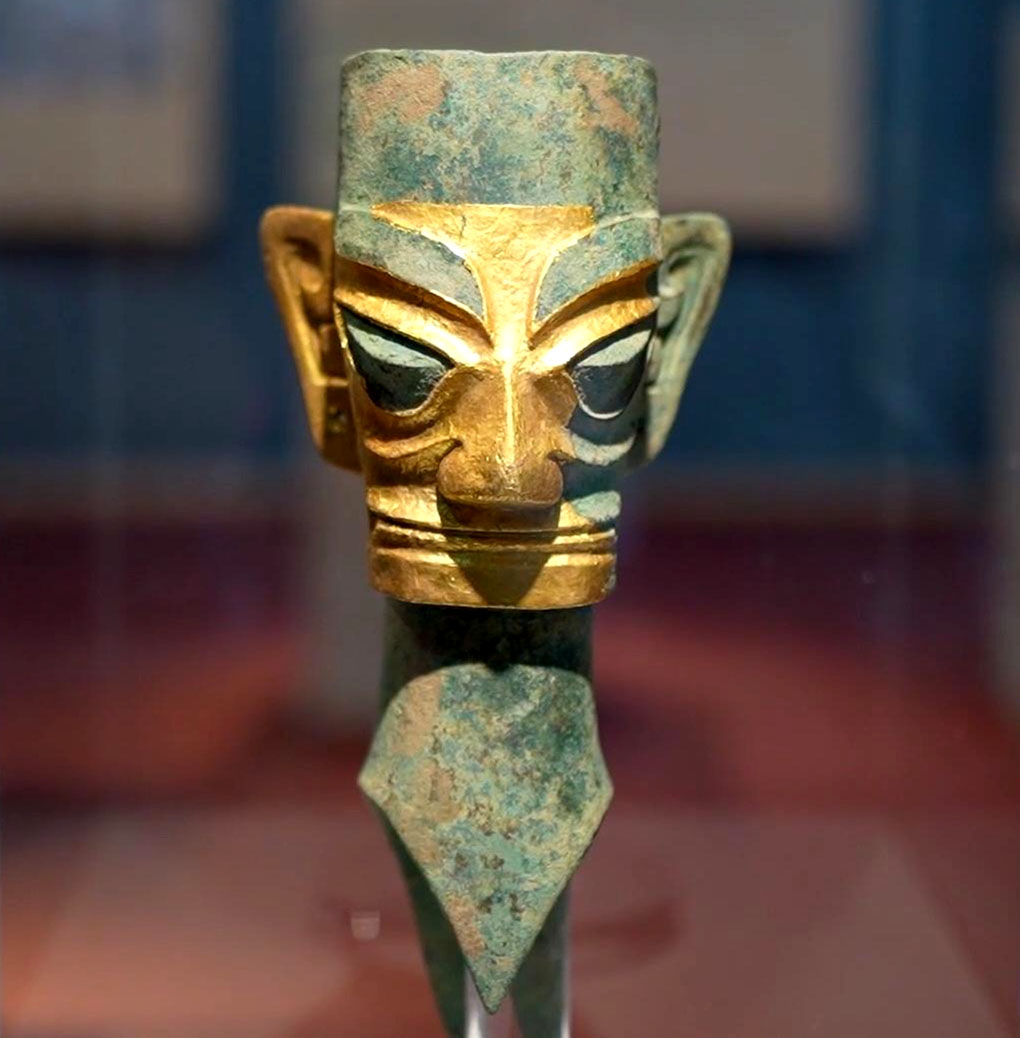
Paul Becerra is among the many visitors who have been captivated by the stunning reproduction of artifacts from Southwest China's Sichuan province on display at an exhibition at the Inka Museum in Cuzco, Peru.
"I have never seen such impressive artifacts before," said Becerra, a reporter with News Cusco, adding that he was thrilled to discover the similarities between the ancient Shu civilization — a remarkable culture that thrived in the region of present-day Sichuan — and the Inca civilization.
The exhibition, titled Light of the Sun: A Dialogue Between Ancient Shu and Inca Civilizations, features 16 replicas and 3D-printed imitations of representative artifacts from the Sanxingdui Museum and the Jinsha Site Museum in Sichuan, along with seven sets of Inca cultural relic items. It opened on Nov 5 and runs through Nov 20.
READ MORE: Chinese, Peruvian exhibitions help to enhance mutual understanding
Although the two civilizations thrived thousands of miles apart in different eras with different customs, the ancestors of both regions shared similar spiritual beliefs and common material pursuits, the event's organizers said.
A large number of artifacts made of gold and belonging to the ancient Shu civilization have been unearthed from the Sanxingdui and Jinsha archaeological sites, both dating back more than 3,000 years. Many of these cultural treasures are objects of veneration, indicating the practice of sun worship among the ancient Shu people.
In the Inca Empire, which was one of the largest in pre-Columbian America, the king was seen as a descendant of the sun god, and gold was used to adorn palaces and make artifacts.
The organizers expect the exhibition in Cuzco, which was the ancient capital of the Inca Empire, to further enhance cultural exchanges between the two civilizations.
An exhibition on the Inca civilization was held at the Jinsha Site Museum from January to April, and it showcased 168 pieces or sets of exhibits from 14 museums in Peru, attracting over 600,000 visitors.
Wang Fang, deputy director of the Jinsha Site Museum and Chinese curator of the ongoing exhibition in Cuzco, said the replicas of the priceless artifacts from the Sanxingdui and Jinsha sites include items made of gold, jade, bronze and wood.
"These items are displayed together with precious artifacts from the Inca civilization, with the aim to enable visitors to appreciate the extraordinary wisdom and creativity of the ancestors of both regions," she said.
Wang said the Peru exhibition is using digital technologies such as naked-eye 3D displays to create an interactive viewing experience that allows visitors to feel they are transcending time and space.
Mohenir Julinho Zapata, director of the Inka Museum, said he hopes the exhibition will serve as a window into Chinese cultural heritage for the people of Cuzco, and deepen exchanges and mutual understanding between Peru and China.
ALSO READ: Beyond blending in
He added that he sees the event as an opportunity to promote long-term exchanges and dialogue between Sichuan and Cuzco.
An international academic forum was concurrently held on Nov 6 at the National University of Saint Anthony the Abbot of Cuzco.
Experts and scholars from China and Peru delivered keynote speeches and held dialogues on topics such as the latest archaeological achievements, experiences in cultural heritage preservation, and the values and characteristics of the ancient Shu and Inca civilizations.
The Inka Museum exhibition is guided by China's State Council Information Office, the Chinese Embassy in Peru, the Ministry of Culture of Peru and the Regional Government of Cuzco. It is organized by the Sichuan Provincial Government Information Office, the Sichuan Provincial Bureau of Cultural Relics and the National University of Saint Anthony the Abbot of Cuzco.
Contact the writers at pengchao@chinadaily.com.cn


